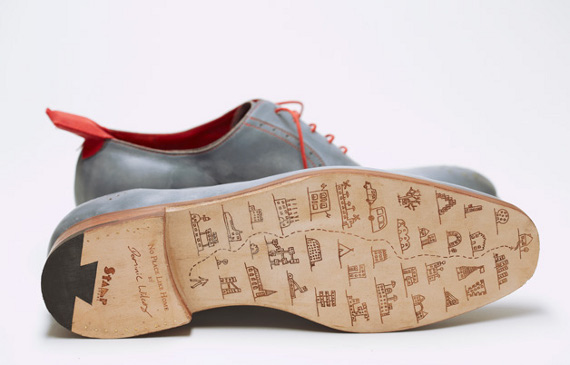Walkers need never again stop to ask for directions; inspired by the film The Wizard of Oz, designer Dominic Wilson has created a pair of shoes with built-in GPS navigation dubbed No Place Like Home.

The shoes are based on a traditional design and give little clue to the wizardry hidden within the sole and heel. Once a destination is uploaded to the shoes via a USB cable, a discreet array of tiny LED lights on the toe of the left shoe indicates the direction in which you need to head, and a similar display on the right toe shows the percentage of your journey that remains. The GPS antenna is hidden within a fabric tab at the back of the shoe.

Handlebar-mounted GPS navigation is already available for bicycles, but there is little reason why the shoe technology could be used by cyclists.
Why do we walk so little?
It’s the most environmentally-friendly way to get from A to B, it’s great exercise and it’s free, so why do we walk so little.
A survey earlier this year for charity Living Streets found that almost two thirds of us walk for less than one hour a week.
55-to-64 year-olds were the most active walking for more than two hours each week. The 35-44 age group walked the least. Reasons cited for not walking more included the time it took, not having the correct footwear, getting hot and sweaty and rain. Few people, it appears, admitted to laziness.
The benefits of walking
- Scientists at the University of Pittsburgh have shown that by walking briskly for 30 to 60 minutes a day, it is possible for a person to lose weight without any alteration to their diet.
- Regular walking helps to prevent peripheral artery disease and the bone disease osteoporosis.
- Walking three to four times a week for 30 minutes has been shown to improve brain function and people’s sense of well being
- Walking-friendly villages, towns and cities are more desirable places to visit and live.
Less than half primary school children now walk to school
In the three years to 1991 the proportion of children aged under 10 walking to school in Britain was 62 per cent, but this has dropped to less than 50 per cent .

By contrast, the proportion of children travelling to school by car has increased from to over 40 per cent.
The move from walking to travelling by car is only partly explained by the fact that the average length of a trip to school has increased for primary school children from 1.3 miles in 1995–97 to 1.6 miles in 2008.
A spokesperson for the Environmental Transport Association (ETA) said: “There may be fewer casualties, but if people switch from walking to cars, high levels of traffic makes streets feel dangerous and puts more people off cycling and walking”
“The increasing number of vehicles on British roads and its effect on the travel habits of children continues a vicious cycle – the more traffic there is, the more likely children are to be ferried to school by car.”
0 Comments View now